Saturday’s 4-1 victory over Motherwell, in front of a packed house at Pittodrie, provided a welcome boost to Jimmy Thelin as Aberdeen hunt down third place in the home stretch of this remarkable campaign.
There were lots of positives to take from the Dons’ showing, but the standout performance, as others have noted, was Leighton Clarkson playing in a deeper central midfield role.
There were no real surprises on the Aberdeen shape (at least on paper).
Motherwell went with a 3-4-3 / 5-4-1. We were expecting a higher press from new manager Michael Wimmer – and we got that in the early stages:
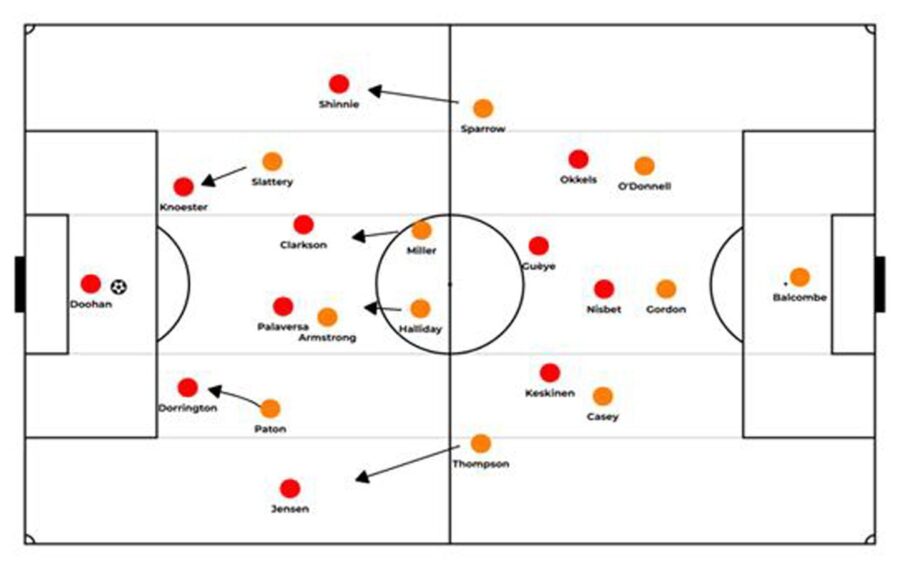
The Steelmen’s initial intention appeared to be to have their centre-forward (Luke Armstrong) pick up Clarkson’s central midfield partner Ante Palaversa, with the other Aberdeen midfielder being matched up by the opposite wide man.
The closest Well wide player to the ball, meanwhile, would close down the Aberdeen centre-back – as shown in the image below right at the start of the match.
Harry Paton is closing down Reds centre-half Alfie Dorrington, while Callum Slattery is keeping an eye on Clarkson, but ready to press on the other Aberdeen CB, Mats Knoesters.
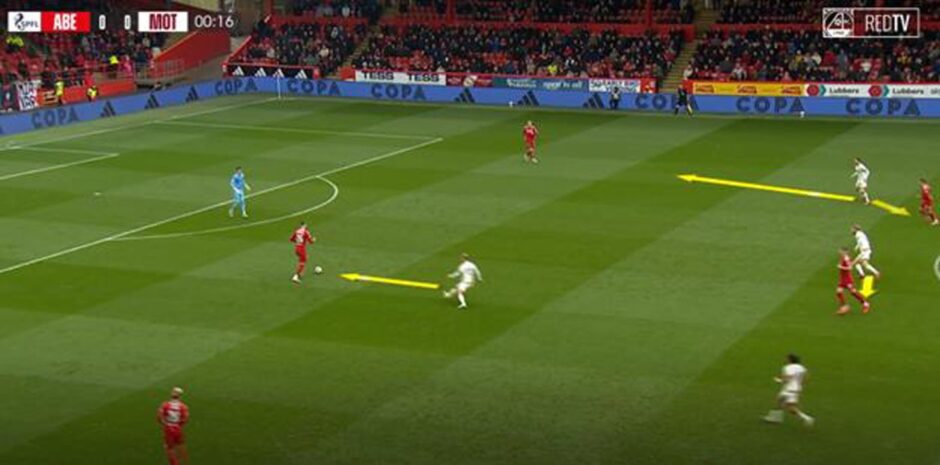
The challenge for Motherwell was that the quicker Aberdeen moved the ball, the more likely a space would appear.
Dons’ Clarkson-Palaversa combo caught Motherwell out
Dorrington and Knoesters are very comfortable on the ball, thus less fazed by an onrushing attacker and capable of punching a first-time pass into the feet of the midfielders – and we saw this in the opening minutes.
Palaversa dragged his marker (Armstrong) with him, bumped the ball back to Knoesters who was able to slip the ball to Clarkson (now in space due to Palaversa’s movement) who then flicked the ball behind Lennon Miller (see image below) before he could get close enough to apply pressure.
From there, Dons attacker Topi Keskinen shot just past the post from Jeppe Okkels’ cross.
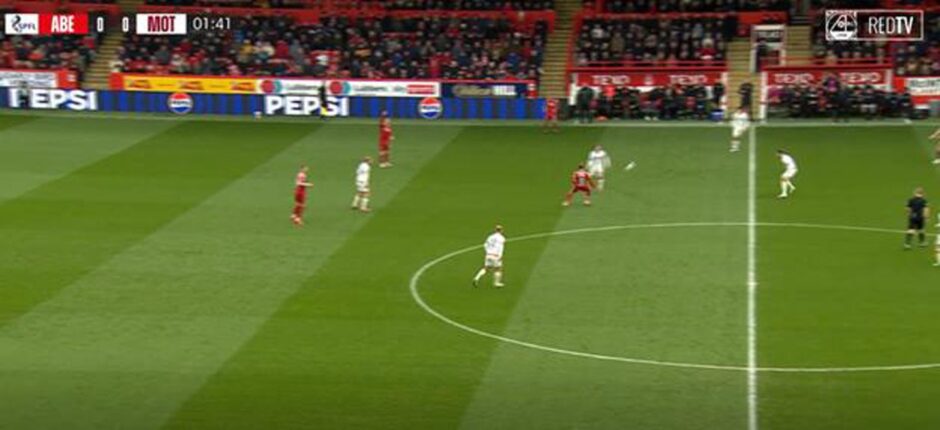
I suspect Motherwell had planned for Graeme Shinnie and Palaversa in midfield for Aberdeen, and with a view to man-marking the Croat and setting a trap for the captain (who is less comfortable receiving the ball in tight spaces), with their own midfield duo, Miller and Andy Halliday, ready to engage at the right moment.
But Clarkson presented a different problem.
Clarkson thrives by moving among Aberdeen’s backline
Over the course of the half, as Armstrong continued to try to shadow Palaversa, former Liverpool player dropped into the back line, in two main ways:
Firstly, in between the centre-backs as the shape moved to a back three.
Secondly, as a left-back as the team retained the back four structure as shown in the image below (Clarkson highlighted at top of picture):
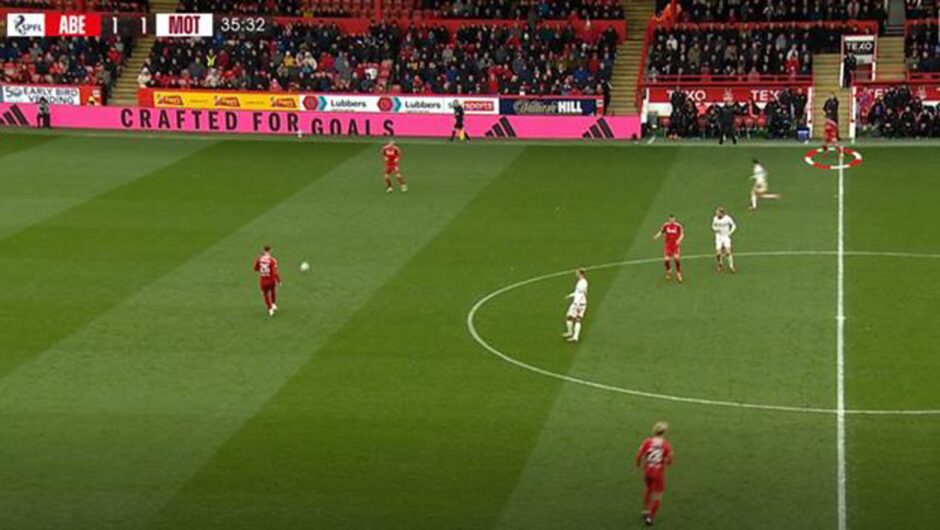
It is worth showing how the piece of play above developed in the next screengrab.
Knoesters carried the ball deep into the Motherwell half as Slattery kept retreating, and then laid it out to Clarkson (again, highlighted) who delivered a cross for Pape Gueye.
The Senegalese’s header was tipped around the post for a corner. However, that corner led to Aberdeen’s second goal – which Clarkson himself scored.
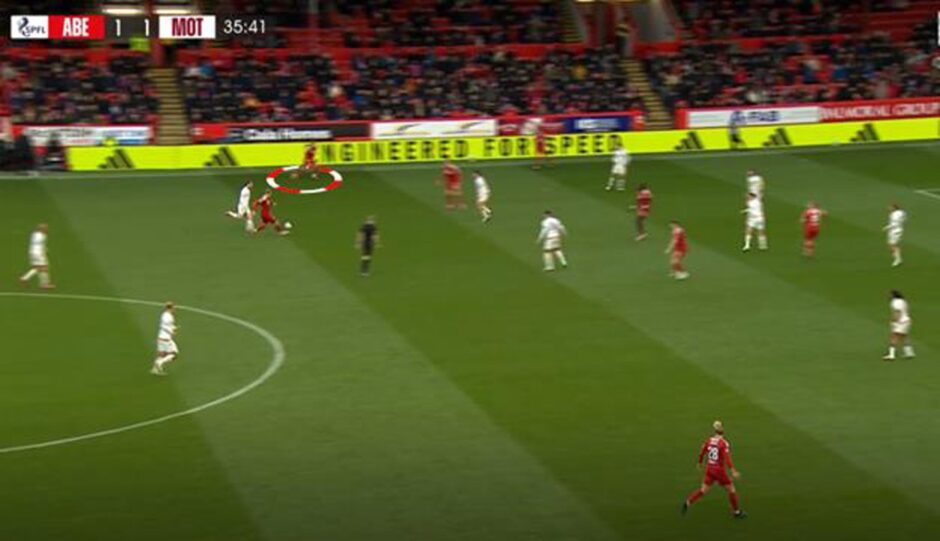
We saw numerous situations like this where Motherwell were overwhelmed as the Dons overloaded the left side. (Note how above Shinnie is effectively the left winger and Okkels is occupying Halliday, who then can’t press Clarkson.)
Back to Clarkson… A midfielder dropping in to receive the ball in space in the backline is not a surefire way to success.
Indeed, against St. Johnstone a fortnight earlier, the Perth side pressed quite high, with three forwards and two midfielders, and Palaversa found himself on the ball a lot in that game in similar positions to Clarkson.
However, the team could not consistently find a man in the area behind the midfielders and in front of the defence and we saw a lot of long balls which amounted to nothing.
This was not a problem on Saturday.
Everything clicks for Jimmy Thelin
Pape Gueye deserves some acknowledgment – not just for staying on the field – but also for timing his runs and picking up positions to receive the ball when Okkels and Shinnie were higher and/or wider.
These building blocks, with inside forwards and high full-backs, have been on show for much of the season and Saturday showed how effective Thelin’s tactics can be when everything clicks.
No doubt there is lots of work being done on the training field with specific movements in the attacking third triggered by certain actions deeper on the field.
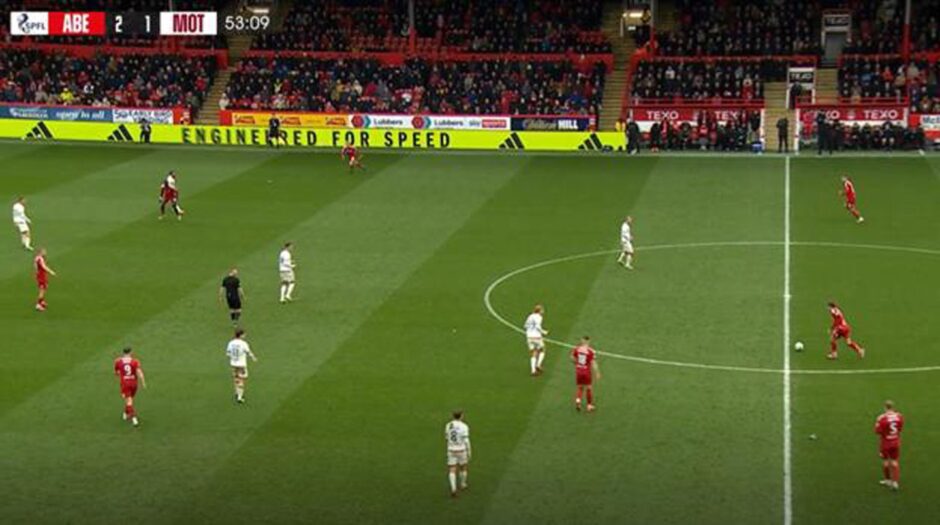
The Dons were aided by a Motherwell side who appeared to lack cohesion in their pressing and struggled to cope with the movement of Aberdeen.
As we can see in the above example, there are at least three passing options for Clarkson (Dorrington, Alexander Jensen and Gueye), and he is under little pressure as he looks to move the ball forward and has plenty of space to do so.
By building up in a three, the Dons can release the full-backs, who then in turn can allow the wingers to move in the field.
At times, this made it felt like Aberdeen had an extra man on the pitch. But it comes with a risk – a misplaced pass could lead to a dangerous counter-attack.
How will Ross County face up to Aberdeen’s tactical approach?
Ross County are unlikely to be so generous to Aberdeen this coming weekend.
I think we can expect their default stance to be to drop deep, stay compact, and let the ball go out wide.
Clarkson may still get time and space on the ball, unfortunately his teammates further up the field may have a harder battle.
Gavin MacPhee is a qualified coach, scout and analyst and holds a degree in Science and Football. He is the creator of www.afc1903.com, an Aberdeen tactical and data blog.
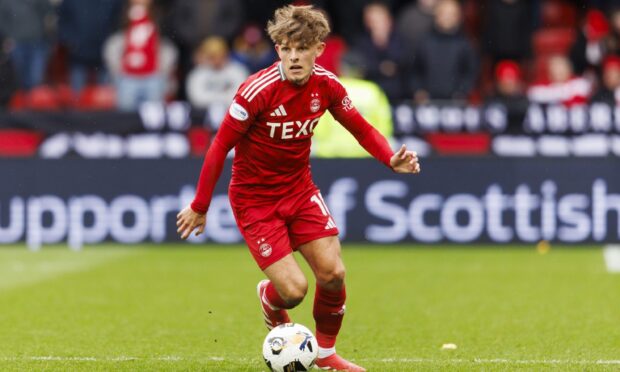
Conversation